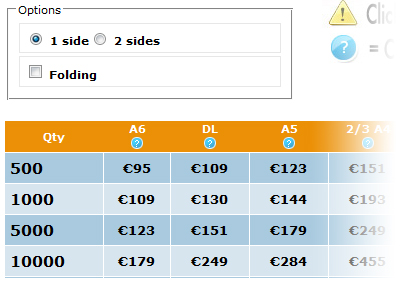I must admit, I was quite exited with the prospect of working with the SEO experts; they’re at the top of their game, have a very impressive client list and we would gain great insight into their SEO strategy and implementation process, both on-site and off-site.
Some Background Info
We first designed and built our client’s website over two years ago and, at the time, we didn’t place too much emphasis on SEO – back then we knew a lot less about SEO and it wasn’t such a hot topic! Having said that, since the site launched in July 2006, our client’s company went from strength to strength; winning multiple awards and increasing their turnover four-fold, to around four million (GBP) per year.
I believe that a large part of the old site’s success was due to the ease of use; simple navigation, clearly defined products and a straightforward, no-fuss, checkout process. However, in order to constantly entice large volumes of traffic to the site, our client was spending a jaw-dropping amount on their Google AdWord campaigns. As competition increased, so did their “pay per click” (PPC) charges and now our client is seeking to reduce some of their AdWord budget and boost site traffic with a good organic ranking. It makes perfect sense. And I’m sure that many businesses will be able to relate to this problem.
The New Website Structure
So after all of the above, obviously one of the main objectives for the new website was to be search engine friendly. The other main objective was not to dramatically move away from the current site’s ordering process, but rather make subtle improvements. From a usability standpoint, the site had been tried and tested and had a proven track record – not only from the multitude of orders the site had received, but we had accumulated just under 10,000 individual feedback responses from the site and were given some great ideas on how to improve the site, from a customer’s perspective.
After conducting their keyword and competitor analysis the SEO experts drew up their site-plan, which was sent to us for implementation. The main structure consisted of:
- a new site navigation structure, including hierarchal product organisation (e.g. Home > Business Cards > Matt Laminated Business Cards);
- segmentation of the existing, non product related, navigation (e.g. about us, terms and conditions, FAQs);
- a new naming convention consisting of new URLs, page names and navigation anchor text; and
- new product blurb (keyword-rich), including an HTML tagging structure (e.g. <h1>Product Title</h1><p>product <strong>keywords</strong> go here</p>)
All in all, very concise.
However, something troubled me with the new site structure. On closer inspection, the new product page titles were very keyword-rich, to the point where it wasn’t representative of the product they were describing. Furthermore, there were now more products available to choose from, within the product menu. For example, the old website had 1 type of printed Leaflet, accessible directly from the product menu:
- Leaflets
- Folders
- Banners
The new site had expanded the Leaflet menu to 3 types, underneath the Leaflet’s landing page:
- Leaflets
- Folded Leaflets
- Double sided Leaflets
- Single Sided Leaflets
- Folders
- Banners
I can see why the SEO experts have done this; Increasing page volume and copy, including high-traffic key words/phrases within the anchor text etc. etc. However, on the old website the user could compare the Leaflet prices at a glance:

To view the same information on the new site the user would choose "Leaflets", from the menu, and then select "single-sided leaflets". To then view "double-sided leaflets" the user would need to navigate away from that page and onto the double sided leaflet’s page. From my experience, this decreases usability and increases complexity – not something an ecommerce site, or any other website should appear.
What raised my concerns even higher, were each Leaflet’s new page title:
- Leaflet Printers
- Leaflet Design
- Cheap Leaflet Printing
Once again, I understood the rationale behind this, but will the product description affect the user’s confidence when choosing to buy a product? Say you were looking to buy “1,000 folded leaflets”, if the product is being described as “Leaflet Design” wouldn’t this cause confusion? What about when the product is described as “Cheap Leaflet Printing” when the leaflets are actually high quality? In fact our client wouldn’t want to describe their products as anything less.
My point is that the old site worked. So would it be necessary to increase the site’s traffic to change the way in which the user selects, views and buys products? I believed there was a compromise to be found. In my view, an understanding of our client’s product range and how customers like to choose those products didn’t appear to have been considered by the SEO experts.
Another point that raised my concern was the SEO expert’s decision to split part of the old site menu and place it further down the page, quite out of view from the user. We were told that these links were to receive the “no follow” attribute, in order the divert PageRank and increase the quality of the page. Some of these menu items were:
- FAQs
- Terms & Conditions
- Delivery Information
From our own user-interaction analysis, taken from a number of ecommerce websites, we have found that to increase conversion rates, the potential customer must be able to easily find key information in order assure themselves of any uncertainties prior to the sale. Browsing FAQs, T&Cs, returns policy and delivery information are absolutely essential to bolster confidence about both the product and the merchant’s service.
We were overruled! After all, they are the SEO experts! I guess the proof will be in the eating of the pudding!

